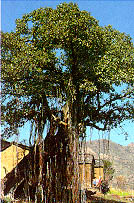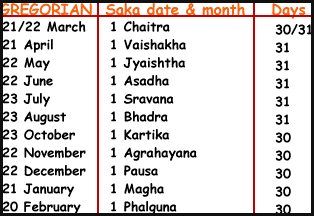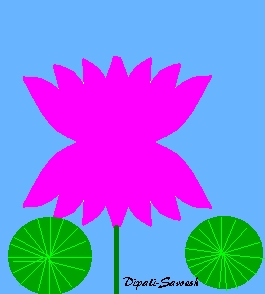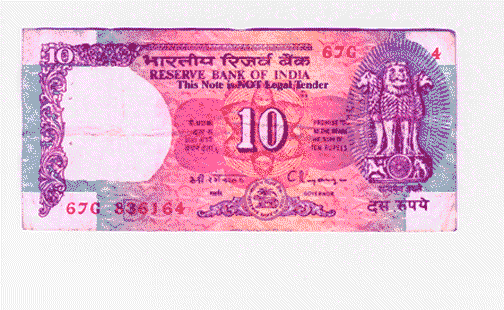| Table of contents |
| Geographical Position |
| Demographic Profile |
| Constitution |
| Climate |
| National Emblem |
| Indian Flag |
| National Song |
| National Flower |
| National Tree |
| National Fruit |
| National Calender |
| National Animal |
| National Bird |
| Currency |
| National Anthem |
| National Language |
| National Sports |
| Indian Culture |
|
Indian History in Comics |
| Visit India |
| Discussion board |
| Indian Festivals |

|
The National Emblem
|
The national emblem is an adaptation from the Sarnath Lion Capital of
Emperor Ashoka.
|

|
|
The National Symbol is an adaptation from the Sarnath Lion Capital of Emperor Ashoka, who ruled from 272 BC to 232 BC. In the original pillar, there are four lions, standing back to back, mounted on an abacus with a frieze carrying sculptures in high relief of an elephant, a galloping horse, a bull and a lion separated by intervening wheels over a bell-shaped lotus. Carved out of a single block of polished sandstone, the Capital is crowned by the Wheel of Law (Dharma Chakra).
In the State Emblem adopted by the Government of India on January
26 1950, only three lions are visible, while the fourth is hidden from view. The wheel appears in relief in the centre of the abacus with a bull on right and a horse on left, and the outlines of the other wheels on the extreme right and left.
The bell-shaped lotus has been omitted. The words Satyameva Jayate from Mundaka Upanishad, meaning 'Truth Alone Triumphs', are inscribed below the abacus in Devanagari script.
|

The National Song
The song Vande Mataram, composed by Bankimchandra Chatterji, was a source of inspiration to the people in their struggles for freedom. The first political session when it was sung was the 1896 session of the Indian National congress. The following is the text of its first stanza:It reads:
|
National Song
Vande Mataram!
Sujalam, suphalam, malayaja shitalam,
Shasyashyamalam, Mataram!
Shubhrajyotsna pulakitayaminim,
Phullakusumita drumadala shobinim,
Suhasinim sumadhura bhashinim,
Sukhadam varadam, Mataram!
|
Meaning
I bow to thee, mother,
richly-watered, richly-fruited,
cool with the winds of the south, dark with the crops of the harvests, the Mother!
Her nights rejoicing in the glory of the moonlight,
her lands clothed beautifully with her trees in flowering bloom,
sweet of laughter, sweet of speech,
the Mother, giver of boons, giver of bliss.
|
English translation of the stanza rendered was by Sri Aurobindo in prose.

The National Game
|
The national sports is the Hockey.
|

|
A game played on turf in which two opposing teams of players, using curved sticks, try to drive a ball into the opponents' goal.
|

The National Tree
|
The national tree is the banyan.
|

|
Commanding a central presence in the timeless setting of India's countryside, is the mighty Banayan, a tree endemic to the
Indian subcontinent. What's amazing about this tree is the fact that it is a veritable micro habitant for countless creatures. For man it provides shelter and is a point where the village community gather and transact much of its affairs.
|

The National Fruit
|
The national fruit is the mango.
|

|
A fleshy fruit, eaten ripe or used green for pickles etc., of the tree Mangifera indica, the mango is one of the most important and widely cultivated fruits of the tropical world. Its juicy fruit is a rich source of Vitamins A, C and D. In India there are over100 varieties of mangoes, in different sizes, shapes and colours. Mangoes, have been cultivated in India from time immemorial. The poet Kalidasa sang its praises. Alexander savoured its taste, as did the Chinese pilgrim Hieun Tsang. Akbar planted 100,000 mango trees in Darbhanga, known
as Lakhi Bagh.
|

The National Calender
|
The national calender is based on "Saka" Era.
|

|
A uniform national calendar based on the (Saka) era, with Chaitra as its first month and a normal year of 365 days was adopted from 22 March,1957 along with the (Gregorian) Calendar. The dates of the National Calendar have a permanent correspondence with the dates of the Gregorian Calendar.
|

The National Flower
|
The national flower is the Lotus
|

|
The Lotus or waterlily is an aquatic plant of Nymphaea with broad
floating leaves and bright fragrant flowers that grow only in shallow waters. The leaves and flowers float and have long stems that contain air spaces. Lotus is the national flower of India. It occupies a significant place in Indian mythology. It is associated with Lakshmi, the goddess of wealth. It symbolizes purity, beauty and everything that is good. The lotus is generally found in white or pink colours but blue flowers are also not unknown. The lotus is sacred for the Buddhists according to Buddhist legends.
|

The national animal
The national animal is the tiger

|
The magnificent Tiger, Panthera tigris, the national animal of India, is a rich-coloured well-striped animal with a short coat. It is known for its
grace, strength, agility. Out of eight races of the species known, the Indian race known as the Royal Bengal Tiger, is found throughout the country except the north-western region, and
also in the neighbouring countries such as Nepal, Bhutan and Bangladesh. The tiger occupies a variety of habitats from dry open jungles, humid ever-green forests to mangrove swamps.
To check the dwindling polpulation of tigers in India, which came down to just 1,827 in 1972, massive conservation programme was initiated in April 1973, known as the
'Project Tiger'. This project aims to maintain a viable population of tigers in India for scientific, economic, aesthetic, cultural and ecological values. Since then, the
tiger population has shown a gradual increase and the census of 1989 puts the tiger population of the country at 4,334. So far, 19 tiger reserves have been established in the country
under this project, covering over 29, 716 sq. km. forest area.
|

The National Bird
|
The national bird is the Peacock
|

|
| The Indian peacock, Pavo cristatus (Linnaeus), the national bird of India, is a colourful, swan-sized bird, with a fan-shaped crest of feathers, a white patch under the eye and a long, slender neck.
The male of the species is more colourful than the female, with a glistening blue breast and neck, and a spectacular bronze-green train of around 200 elongated feathers. The female is brownish, slightly smaller than the male, and lacks the train. The elaborate courtship dance of the male, fanning out the tail and preening its feathers is a gorgeous sight.
The peacock is widely found in the Indian sub-continent from the south and east of the Indus river, Jammu and Kashmir, east Assam, south Mizoram and the whole of the Indian peninsula. The peacock enjoys immense protection. It is fully protected under the Indian Wildlife (Protection) Act, 1972. |

The Currency Of India
The currency of India is Rupee. Rupee Reference Rate: 44.67 US dollar(on 23rd July 2000)

A ten Rupee note.
|
|
|
|

 
This site designed and maintained by Web Design Services
|

